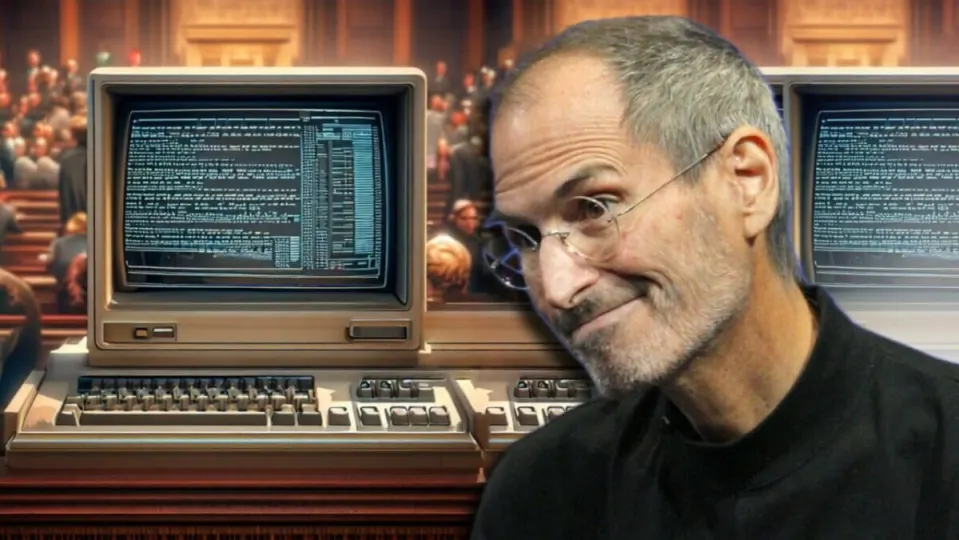In 1980, the technology industry witnessed one of its early legal battles that would shape its history. The protagonist was Apple, who was facing off against Franklin Computer, a company that had created a clone of the Apple II called the Franklin Ace. Apple was not the company it is today, and copyright laws were not as clear as they are now. And from this situation, one of the most peculiar icons in Apple’s catalog was born. It was a brilliant idea by Steve Jobs, who was preparing to put on a show in the midst of the trial.
Only eight keys for an instant verdict
The copy made by Franklin Computer was not just a hardware clone, but they had also copied the entire software, ROMs, and even the documentation. As Andy Hertzfeld tells us, there were even some pages in the manual where the company had forgotten to change “Apple” to “Ace.” To make matters worse, the Ace was sold at a lower price than the Apple II, further complicating the situation for the Apple company.

Despite the clear evidence of copying, the trial was filled with tension. Franklin argued that the ROMs of the Apple II were just a “functional mechanism” and, therefore, they had the right to copy them. The verdict, although favorable to Apple, made it evident that intellectual property protection in the technology industry would be a recurring issue.
And that’s what made Steve Jobs think about how to ensure that, in the case of a future copy, the case could be visually and effectively demonstrated in court.
“Steve decided that if a company copied the Mac ROM in their computer, he would like to be able to demonstrate it during the trial, where he could type a few keystrokes on an unmodified infringing machine, and a large ‘Stolen from Apple’ icon would appear on its screen. The routines and data to perform this would have to be stealthily incorporated into our ROM, so the cloners wouldn’t know how to find or remove it.”
No joke, the dramatic effect of the demonstration would have been typical of Steve Jobs and could have come straight out of a movie. However, no one ever copied Apple’s ROMs again, and Jobs’ strategy never had to be used in a trial. Good news, although we certainly missed out on seeing the face of the infringing company as they witnessed that iconic and accusatory drawing appear on the screen with just eight keys.
A prelude to another crisis
The story of Apple and software copying didn’t end there. Later, in late 1994, and without Steve Jobs at the helm, Apple would face another related problem, but in a very different way. At that time, with Microsoft gaining ground in the computer industry, Apple decided to license its operating system to Power Computing to manufacture compatible machines. The result of this decision was not as expected, as it led to the release of cheaper “Mac” computers instead of boosting Mac sales. In fact, this decision almost bankrupted the Cupertino company, although they were able to remedy the situation in time.

The licensing period for Apple extended until mid-1997 when Mac OS 8 was introduced, leaving behind System 7. With the name change, the licenses became invalid and came to an end. Later on, to ensure control, Apple purchased Power Computing’s Mac business for $100 million, putting an end to the era of Macintosh clones. While this operation didn’t have the visual impact of the icon that Steve Jobs planted in the system years earlier, it cleared the path for his return to the company he co-founded and had to depart from years ago.
Lessons learned from these episodes have been crucial for the evolution of both Apple and the industry as a whole and, to some extent, have shaped how intellectual property is understood in the technology sector. While we enjoy the video in which Steve Jobs compared Apple to Microsoft, it is clear that the “Stolen from Apple” icon, even though it was never used, is a fun reminder of that battle where originality should be able to shine.
Some of the links added in the article are part of affiliate campaigns and may represent benefits for Softonic.


